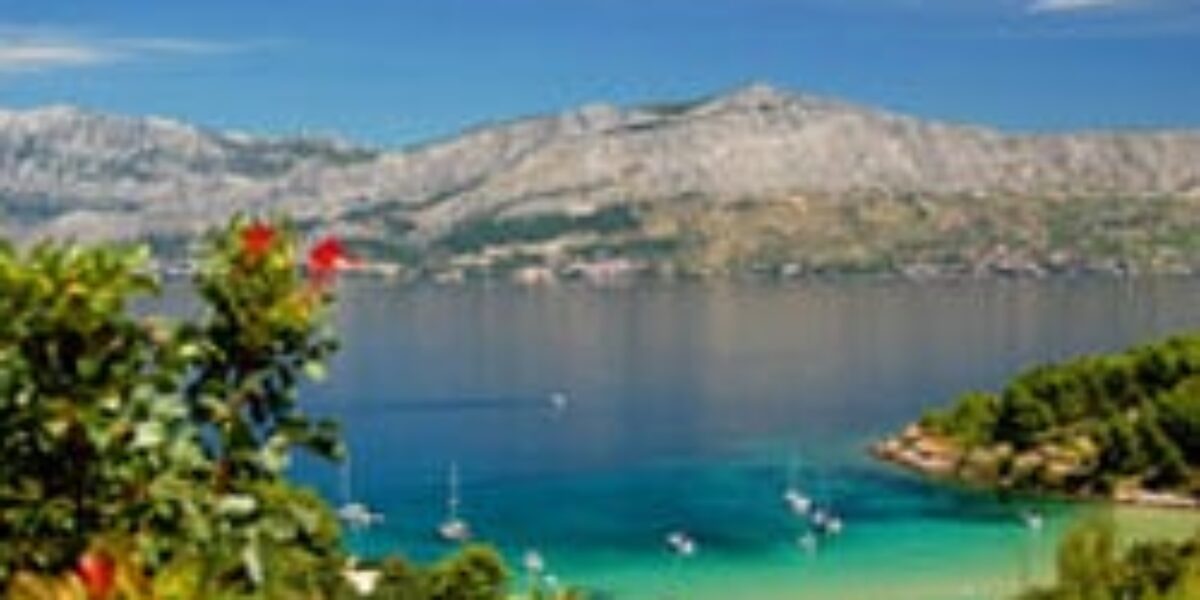Rising Star
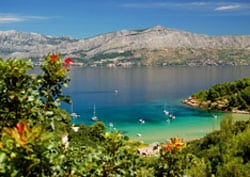 As tourists increasingly turn on to Croatia’s hitherto hidden charms the national carrier, Croatia Air, is fast becoming one of the rising stars of the European airline industry.
As tourists increasingly turn on to Croatia’s hitherto hidden charms the national carrier, Croatia Air, is fast becoming one of the rising stars of the European airline industry.
Independent travel guide Lonely Planet has previously named Croatia as the top pick destination, while National Geographic Adventure Magazine recently named Croatia as Destination of the Year not too long ago. Conde Nast Traveller and other publications at the top end of the market have been falling over themselves to mention Croatia’s budding new boutique hotels and the country is currently being advertised under the motto ‘The Mediterranean As It Once Was’.
All in all, it’s proving to be a winner. Tourist visitor numbers in 2011 were up 8% on the previous year with 11.2m visitors. Statistics for the number of British visitors show promising growth for the 2011 with 260,000 Brits travelled to Croatia up until October, when the last figures were available. This still beat the previous year’s annual total, and tourist numbers were up 5% year on year.
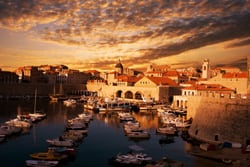 Director of the Croatian National Tourist Board, Niko Bulic, revealed that there were now 70 flights between the UK and Croatia and 163 UK tour operators offering holidays to the country. Based in Zagreb, Croatia Airlines is increasingly being relied on. Wholly-owned by the Croatian Government, the carrier has one of the most modern fleets in Europe and operates an extensive network of services within Europe from its base at Buzin, Zagreb.
Director of the Croatian National Tourist Board, Niko Bulic, revealed that there were now 70 flights between the UK and Croatia and 163 UK tour operators offering holidays to the country. Based in Zagreb, Croatia Airlines is increasingly being relied on. Wholly-owned by the Croatian Government, the carrier has one of the most modern fleets in Europe and operates an extensive network of services within Europe from its base at Buzin, Zagreb.
Even so, it’s telling that the largest percentage gains in tourist visitors are hailing from central Europe. Visitors from Austria showed the biggest increase in visitor numbers with 11% more coming in 2011, while visitors from Germany were up 10%. Followed by a 7% increase in visitors from Slovakia and 6% more from Poland, while Croatia’s Italian neighbours made 4% more visits.
According to figures from the Tourist Board, Dalmatia received the most tourist arrivals – accounting for 5 million which is up 6% on 2010 and accounts for almost half of all tourist visitors. Istria the next most popular region with 3 million tourists visiting, followed by the Kvarner region with 2.2 million.
Croatia’s province of Istria is as much a part of the Mediterranean’s Olive Oil Belt as Tuscany, Andalucía, or Provence. Anyone who’s familiar with Italian cuisine will find the food here strangely familiar – there’s pasta, prosciutto, olive oil, rosemary in abundance, and straightforward adherence to seasonality. You could almost be in Italy.
 According to the New York Times, Istria is the new Tuscany. It’s an unlikely brigade of filibusters who are leading the vanguard to bring the nation to wider recognition, but the power of adventurous foodies weary of overpriced and overcrowded tables in Tuscany should not be underestimated. In fact, the NY Times points out that Italians do indeed drive over for a single meal – pointing out that the journey from Trieste deep into Istria takes little over an hour.
According to the New York Times, Istria is the new Tuscany. It’s an unlikely brigade of filibusters who are leading the vanguard to bring the nation to wider recognition, but the power of adventurous foodies weary of overpriced and overcrowded tables in Tuscany should not be underestimated. In fact, the NY Times points out that Italians do indeed drive over for a single meal – pointing out that the journey from Trieste deep into Istria takes little over an hour.
Tourists from Germany, Italy, Slovenia, Austria and the Netherlands had acquainted themselves with Istria – Munich is a five hour drive – but now British visitors are waking up to the region’s untapped potential as gourmet and lifestyle destination par excellence. New international routes are being developed between the UK and the airport at Pula – the region’s largest town.
Tourist visitor numbers in 2011 were up 8% on the previous year with 11.2m visitors.
In fact, Pula has had a strategic importance long before today’s gastro tourists and larder louts even thought of conquest cuisine . Located at the southern tip of Istria, the Romans built Pula, leaving one of the best-preserved coliseums in Europe. The Venetians ruled it for five whole centuries before the Hapsburgs claimed it as their own in 1797. Today, Pula’s rich cultural history is amazingly intact and lying there begging to be explored.
Leaving Istria and travelling south we enter another part of Croatia that’s basking in the warm glow of media praise – namely the island of Hvar, an increasingly popular destination for tourists, which makes Conde Nast Traveller’s lists of top 10 islands.
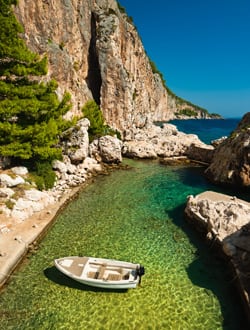 Located just 6km from the mainland, the 80km land was inhabited by the Greeks around 2,500 years ago. Approaching Hvar, the beautiful Venetian harbour nestled against tree-topped slopes and littered with shops and pavement cafés is an unforgettable experience. Hvar today is a bustling cosmopolitan centre with it’s own stylish boutique hotel – The Riva. Beyond this the town’s waterside square is framed by beautiful old buildings, like the 16th-century St Stephen’s cathedral and the arches of the 17th-century Venetian Arsenal. It’s a sight for anyone who feels there’s nothing left in Europe to discover.
Located just 6km from the mainland, the 80km land was inhabited by the Greeks around 2,500 years ago. Approaching Hvar, the beautiful Venetian harbour nestled against tree-topped slopes and littered with shops and pavement cafés is an unforgettable experience. Hvar today is a bustling cosmopolitan centre with it’s own stylish boutique hotel – The Riva. Beyond this the town’s waterside square is framed by beautiful old buildings, like the 16th-century St Stephen’s cathedral and the arches of the 17th-century Venetian Arsenal. It’s a sight for anyone who feels there’s nothing left in Europe to discover.
In fact, the British Navy frequented the nearby harbour of Vis during the Napoleonic Wars. They renamed it Port St George and introduced the locals to cricket – a game that, incongruously, is still popular here today as the frequent sound of leather on willow bears out.
Croatia’s Dalmatian coast has long been admired and is firmly on the tourist map, but Croatia still offers excellent value for money when compared to other Mediterranean destinations. The brand new Radisson Blu in Split is a perfect example of this with all the style and finesse you could possibly hope for and rooms from around EUR100 a night. The hotel features crystal blue Adriatic Sea, the brand new Radisson Blu Resort, Split is a luxury oasis offering a beautiful pebble beach, two pools, three restaurants and four chic bars. It’s the perfect location for conferences, events and meetings, with nine spacious meeting rooms and the capacity to accommodate up to 350 guests.
In the run up to EU accession Croatia offers superb opportunities for business travellers and bona fide tourists alike.
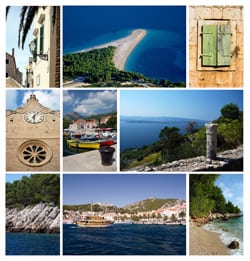 You can base yourself in Split and charter a private yacht to sail your guests down the Adriatic to Dubrovnik – which seems like a wildly luxurious gesture and one that’s only available to Oligarchs. Until you realise you can do it on a supremely manageable budget. Several companies in the region offer week-long excursions on a 30m yacht for around EUR1000 per person based on a party of 10 – amazing value for money by anyone’s standards.
You can base yourself in Split and charter a private yacht to sail your guests down the Adriatic to Dubrovnik – which seems like a wildly luxurious gesture and one that’s only available to Oligarchs. Until you realise you can do it on a supremely manageable budget. Several companies in the region offer week-long excursions on a 30m yacht for around EUR1000 per person based on a party of 10 – amazing value for money by anyone’s standards.
Of course, the Dalmatian Adriatic is a spectacularly beautiful marine playground studded with 1,000 islands, many of them deserted. And then there’s Dubrovnik –
Huddled around a steep peninsula above the azure Adriatic, the ancient Croatian port of Dubrovnik is arguably the best-preserved walled city in Europe.
Once rivalling Venice for trade, Dubrovnik’s old town is an experience not to be missed. Freed of all motorised traffic, its pale limestone buildings, topped with their distinctive terracotta tiles, the whole city resembles a film set.
Getting your bearings is easy enough; Stradun, the main drag runs from Pile Gate down to the busy harbour. Bustling streets lined with cafes and shops branch out from here – which ever route you take, you can’t go far wrong – pleasant surprises lie around every corner. Which actually describes the whole of Croatia in a nutshell.


